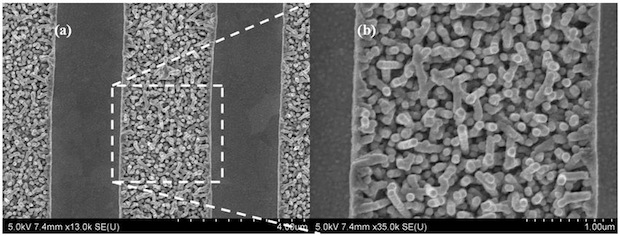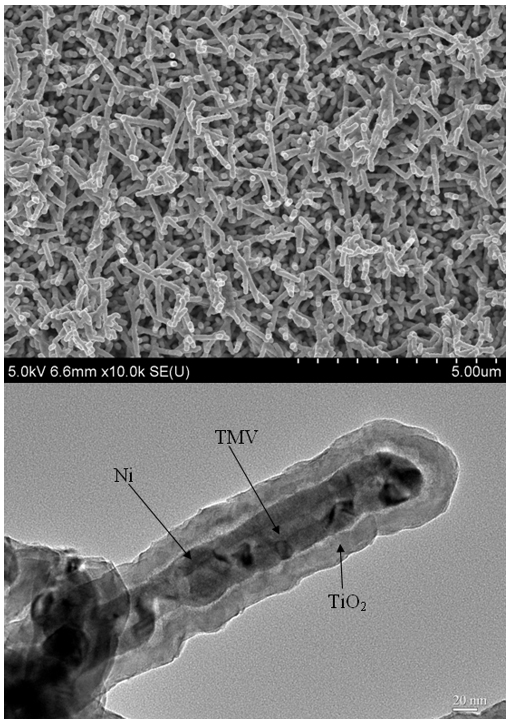The virus will help to increase the capacity of Li-ion batteries by an order of magnitude
The Tobacco Mosaic Virus (TMV) has a bad reputation: it infects hundreds of different plants, including tomatoes, peppers and, of course, tobacco. But his image can improve if the results of American researchers are confirmed under the leadership of Professor Reza Ghodssi .
According to scientists, rod-shaped viruses can vertically dock to the plane of the electrodes in Li-ion batteries, increasing the area of the conductor and increasing the capacity of a standard battery tenfold.

The genetically modified virus is launched on tobacco leaves for propagation, then the virus bodies are collected, crushed and isolated in a centrifuge (on average, a kilogram of TMV in solution is obtained per kilogram of leaves). The modified virus is specifically designed to stick to gold-containing plates, which serve as templates for the subsequent manufacture of electrodes. The result is a metal-biological mixture, the area of which is an order of magnitude larger than the area of a smooth plate.
Then a nickel coating is applied to this mixture. As can be seen in the last photo, the body of the virus is covered with a metal film about 20 nm thick.

The template for the battery electrode is almost ready. It remains to apply the active substance over the surface (usually lithium oxides with cobalt or manganese for anodes) using, for example, magnetron sputtering .
Viruses in this patented design are completely isolated, so that batteries are not contagious to surrounding plants.
Interestingly, using such a technique, it is possible to create extremely small batteries for microscopic-sized robots.
According to scientists, rod-shaped viruses can vertically dock to the plane of the electrodes in Li-ion batteries, increasing the area of the conductor and increasing the capacity of a standard battery tenfold.

The genetically modified virus is launched on tobacco leaves for propagation, then the virus bodies are collected, crushed and isolated in a centrifuge (on average, a kilogram of TMV in solution is obtained per kilogram of leaves). The modified virus is specifically designed to stick to gold-containing plates, which serve as templates for the subsequent manufacture of electrodes. The result is a metal-biological mixture, the area of which is an order of magnitude larger than the area of a smooth plate.
Then a nickel coating is applied to this mixture. As can be seen in the last photo, the body of the virus is covered with a metal film about 20 nm thick.

This is how viruses look on the plate after nickel plating
The template for the battery electrode is almost ready. It remains to apply the active substance over the surface (usually lithium oxides with cobalt or manganese for anodes) using, for example, magnetron sputtering .
Viruses in this patented design are completely isolated, so that batteries are not contagious to surrounding plants.
Interestingly, using such a technique, it is possible to create extremely small batteries for microscopic-sized robots.
